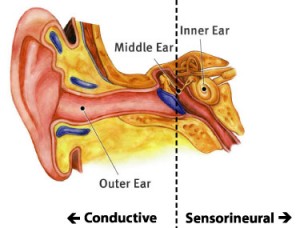Seahawks’ Derrick Coleman to Become First Deaf NFL Player at Super Bowl
Are you one of the over 8 million people who’ve seen the Duracell Trust Your Power video?
The video features Seattle Seahawks offensive lineman Derrick Coleman, who will become the first legally deaf NFL player to play in a Super Bowl.
What is so inspiring is that Coleman has become an NFL player at all.
Derrick became deaf at the age of three, most likely from a genetic condition. Growing up, he was frequently taunted and bullied by other children. Because his hearing aids would pop out of his ears, his mother fashioned a support out of panty hose to hold them in place. High school coaches tried to get him to quit. But Coleman loved to play football and still strove to become a professional player.
He played well at UCLA, but was overlooked in the NFL draft. He was signed by the Minnesota Vikings as an undrafted free agent, but was cut a few months later. However, in December 2012. the Seattle Seahawks signed him, and the rest is (as they say) history….
Coleman can read lips and quarterback Russell Wilson has been seen mouthing any last minute play changes to him. Head coach Pete Carroll told the Seattle Times that it’s “really not even something that we deal with.” And even Coleman says his deafness can sometimes be a plus, especially when dealing with rowdy fans :
“When it gets loud I feel like I have the advantage. I can tune that out.”
Hearing Loss in Children:
About 2 – 3 infants out of every 1,000 live births will have some degree of hearing loss at birth. Hearing loss can also develop in children who had normal hearing as infants. The loss can occur in one or both ears, and may be mild, moderate, severe, or profound. Profound hearing loss is what most people call deafness.
Some cases of hearing loss are progressive (they get worse over time). Other cases of hearing loss stay stable and do not get worse.
Risk factors for infant hearing loss include:
- Family history of hearing loss
- Infection with some viruses and bacteria
- Low birth weight
- Problems with the structure of the skull bones
There are four types of hearing loss:
 Conductive hearing loss (CHL): results from a problem in the outer or middle ear, such as wax buildup, rupture of the eardrum, or repeated infections. It is usually possible to treat conductive hearing loss with medication or surgery.
Conductive hearing loss (CHL): results from a problem in the outer or middle ear, such as wax buildup, rupture of the eardrum, or repeated infections. It is usually possible to treat conductive hearing loss with medication or surgery.
Causes of conductive hearing loss in infants include:
- Abnormalities in the structure of the ear canal or middle ear
- Buildup of ear wax
- Ear infections (especially repeated infections)
- Foreign objects in the ear
- Injury
- Rupture of the eardrum
- Tumors
Sensorineural hearing loss (SNHL): results from a problem with the inner ear. The inner ear is responsible for sending signals to the auditory (hearing) nerve. There is no cure for sensorineural hearing loss. People with this type of hearing loss may benefit from hearing aids or a cochlear implant.
Causes of sensorineural hearing loss include:
- Exposure to certain toxic chemicals or medications while in the womb or after birth
- Genetic changes or conditions, such as Down syndrome
- Infection before birth, including cytomegalovirus infection, or infection with German measles during the early stages of pregnancy
- Infections after birth, such as bacterial meningitis
- Problems with the structure of the inner ear
Mixed hearing loss: hearing loss that results from a combination of conductive and sensorineural problems. Causes of mixed hearing loss can include any combination of the above SNHL and CHL causes.
Central hearing loss: results from damage to the auditory nerve itself, or the brain pathways that lead to the nerve. Central hearing loss is rare in infants and children.
Causes of central hearing loss include:
- Diseases that affect the protective coating (myelin sheath) around nerve cells
- Tumors
Symptoms
Signs of hearing loss in infants vary by age. For example:
A newborn baby with hearing loss may not startle when a loud noise sounds nearby.
Older infants, who should be responding to familiar voices, may show no reaction when spoken to.
Children should be using single words by 15 months, and simple 2-word sentences by age 2. If they do not reach these milestones, hearing loss since infancy may be the cause.
Some children may not be diagnosed until they are in school. This is true even if they were born with hearing loss. Inattention and falling behind in class work may be the result of an undiagnosed hearing loss problem.
For a more extensive checklist, entitled: Your Baby’s Hearing and Communicative Development Checklist
For more information about hearing disorders, click here to go to the Resounding Health Casebook on the topic.



























0 comments